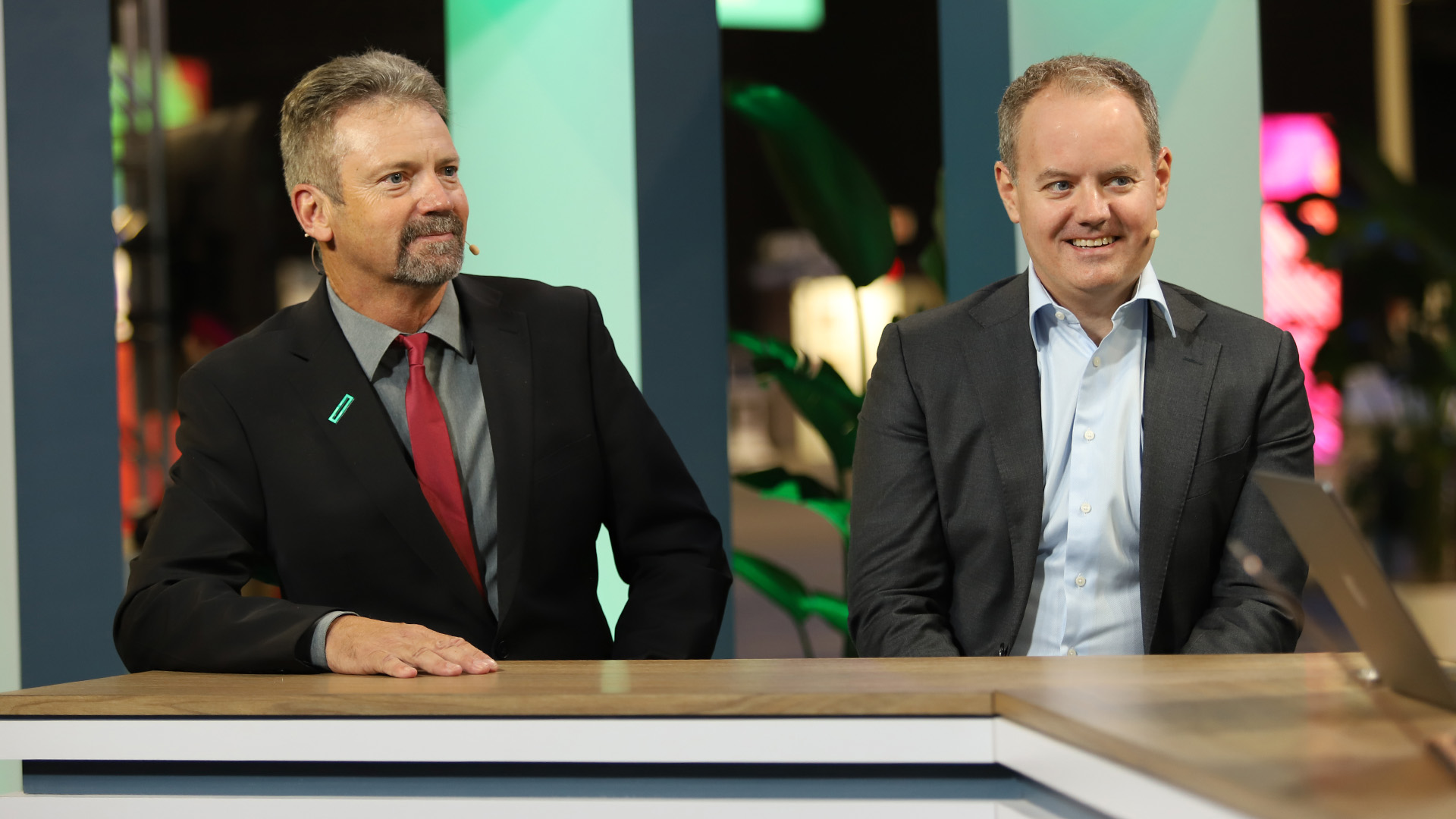 EMERGING TECH
EMERGING TECH
 EMERGING TECH
EMERGING TECH
 EMERGING TECH
EMERGING TECH
Space exploration has always captured the imagination of humanity, pushing the boundaries of what we thought was possible.
In the quest to explore new frontiers, innovative partnerships are being formed to revolutionize space technology. One such partnership between Venturi Astrolab Inc., a startup specializing in planetary robotic systems, and Hewlett Packard Enterprise Co., is set to redefine the future of space exploration.
Jaret Matthews (pictured, right), founder and chief executive officer of Astrolab, joined theCUBE at HPE Discover to talk about Astrolab’s and HPE’s partnership and the innovations that are coming out of the partnership in edge computing, as well as the future of computational science in space.
“Astrolab is developing the next link in the transportation network for the solar system,” Matthews said.
Matthews and Norm Follett (pictured), director of global technical marketing at HPE, spoke with theCUBE industry analysts Dave Vellante and Lisa Martin at HPE Discover, during an exclusive broadcast on theCUBE, SiliconANGLE Media’s livestreaming studio. They discussed the HPE/Astrolab partnership and how the companies are leveraging cutting-edge technology to overcome challenges and pave the way to the moon and beyond. (* Disclosure below.)
Astrolab, a startup founded three years ago, is making waves in the space exploration industry. Based in Los Angeles, the company is focused on developing novel planetary robotic systems. Matthews brings a wealth of experience from his time at NASA’s Jet Propulsion Laboratory and Space Exploration Technologies Corp., where he worked on projects such as the Mars rovers and spacecraft mechanisms.
With the imminent launch of SpaceX’s Starship lander, which is set to be the largest rocket ever created, Matthews believes that Astrolab can pave the way for groundbreaking missions on the moon and eventually Mars.
“Having spent seven years at that organization myself, I’m very confident that they’re gonna get there,” Matthews said when speaking of SpaceX. “You know, they’re trying something that’s extremely hard, but they have a really incredible team and deep, deep experience now and accomplishing really hard goals. I have every confidence that they’ll get there.”
One of the key challenges faced by those operating on the moon is limited bandwidth for data transmission back to Earth. To tackle this issue, Astrolab has formed a strategic partnership with HPE to leverage its edge-computing capabilities.
The partnership aims to revolutionize the way data is processed and transmitted from the lunar surface. Rather than sending vast amounts of raw data, Astrolab and HPE are working together to extract valuable insights locally, using edge computing. This approach not only optimizes bandwidth usage, but also enables more efficient and meaningful data analysis.
“For the first five or 10 years of lunar development, in the coming decade, the main export from the lunar surface is going to be data,” Matthews said, when talking about the significance of the collaboration.
By harnessing HPE’s expertise in edge computing, Astrolab aims to maximize the value derived from lunar missions and accelerate the exploration of the moon as a stepping stone to Mars.
Drawing a parallel between the current developments in space exploration and the building of railroads to California in 1870, Matthews highlighted the economic opportunities presented by expanding humanity’s reach beyond the current horizon, with influential figures, such as Jeff Bezos and Elon Musk, investing billions of dollars in developing a transportation network for the moon.
As Astrolab and HPE forge ahead with their partnership, the prospects for space exploration and the utilization of edge computing in space are set to soar. With the moon becoming the next frontier of exploration and economic potential, Astrolab’s groundbreaking work will help to shape the future of space travel and scientific discovery.
“Soon it will become not only frequent, but economical to send stuff to the moon,” Matthews added.
Here’s the complete video interview, part of SiliconANGLE’s and theCUBE’s coverage of HPE Discover:
(* Disclosure: This is an unsponsored editorial segment. However, theCUBE is a paid media partner for HPE Discover. Hewlett Packard Enterprise Co., Intel Corp. and other sponsors of theCUBE’s event coverage have no editorial control over content on theCUBE or SiliconANGLE.)
Support our mission to keep content open and free by engaging with theCUBE community. Join theCUBE’s Alumni Trust Network, where technology leaders connect, share intelligence and create opportunities.
Founded by tech visionaries John Furrier and Dave Vellante, SiliconANGLE Media has built a dynamic ecosystem of industry-leading digital media brands that reach 15+ million elite tech professionals. Our new proprietary theCUBE AI Video Cloud is breaking ground in audience interaction, leveraging theCUBEai.com neural network to help technology companies make data-driven decisions and stay at the forefront of industry conversations.